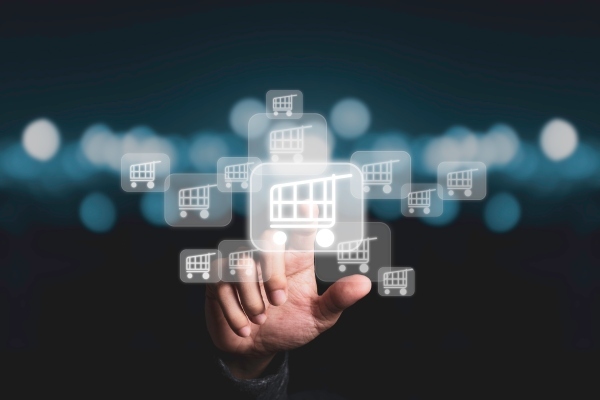
ARE OLDER MARKETING PRACTICES STILL CURRENT?
A few years ago, I did some research into online buying behaviour and developed a process for quick strategy development. It has been in archives for the past 5 years.
Since attending Entrepreneur 5.0 in Cape Town, I decided to dig it up as part of my value to the busy business owners whom I assist with marketing. At the base of my findings was that there are only 6 questions you need to ask about your product and its potential buyer and it will uncover bang-lot of information about the next steps you need to make in your marketing.
These are the questions with some tweaks for modern-day marketing. Does it still apply after 5 years? Your feedback will be much appreciated.
HOW TO PUT THE ANSWERS TO THESE SIX QUESTIONS INTO PRACTICE
1. Choose a product you're planning a marketing campaign for. Also give some thought to potential buyers you aim to target. Remember that someone who is price conscious will not buy into exclusivity or vice versa so each one requires a different campaign.
2. Next, note your answers for 1 - 6.
3. Finally, head on over to this 1-minute marketing strategy tool that will generate a marketing strategy based on your answers:
https://simplycolossal.com/1-minute-marketing-strategy-quiz
1. Is your product new to the market or do similar products already exist?
a. NEW TO MARKET
Because your product offering is new to the market, a large part of your marketing budget and efforts should probably be allocated to educating potential buyers about the use and benefits of the product before attempting to sell.
b. SIMILAR PRODUCTS ALREADY EXIST
When there are similar products to yours already on the market, a large part of your marketing budget and efforts should be allocated to educating potential buyers why they should buy from you and not your competitors.
2. Do potential buyers have to touch, taste, hear, or smell your product before purchasing?
a. YES
Internet marketing becomes tricky for products that require touching, tasting, hearing, or smelling as part of the buying decision-making process, especially if it's a first-time purchase. Encourage first-time purchases with descriptive text that will appeal to your readers' five senses. For virtual products, provide samples, such as video or audio snippets and e-book extracts. For physical products, consider ways in which you can deliver samples to potential buyers, for example, partner stores or snail mail.
b. NO
The Internet is the perfect platform for marketing virtual products, such as e-books, courses, webinars, and podcasts, because purchase decisions can be made purely on what is seen without the need to touch, taste, hear, or smell. It is also perfect for selling physical products that can be assessed purely by what is seen, for example, property. Because these products rely heavily on visual stimulation, the quality of your images and videos could be the deciding factor.
3. Are you targeting your product at businesses or at consumers/end-users?
Consider your target market as wearing different hats: A business decision-maker is also a consumer who eats, drinks, and plays, but wears a different hat depending on the time of day, day of the week, week of the month, and the product being purchased. Each online marketing platform, such as Facebook, LinkedIn, Twitter, and Instagram, has its own benefits, which is why businesses with enough marketing resources can focus on all platforms at the same time.
a. BUSINESSES
If you're a business with limited marketing resources, consider focusing on LinkedIn as your primary platform. With the focus of LinkedIn being on business networking, you have direct access to business decision-makers when they’re wearing their “business hats.” Content should be professional, informative, relevant, and help them solve their business problems.
b. CONSUMERS/END-USERS
If you're a business with limited marketing resources targeting consumers, consider focusing on Facebook as your primary platform. With the focus of Facebook being more on building friendships than on business networking, you're more likely to reach individuals outside of their "business hats" in a more relaxed environment. Content can be casual, frivolous, fun, and help them solve their everyday problems.
4. Which factor is most important to your potential customers when deciding whether to buy?
a. PRICE
When price is behind the buying decision, don't expect brand loyalty from customers. They will switch to competitors who offer best benefits at the best prices. To encourage first-time and repeat buyers, your content needs to emphasize the discounts, savings, or value.
b. CONVENIENCE
When convenience is behind the purchase decision, potential buyers don't mind paying a little extra to reduce their effort in acquiring the product. To encourage first-time and repeat buyers, your content needs to highlight the convenience you offer.
c. EXCLUSIVITY
When exclusivity is behind the purchase decision, there is no limit to the time and money potential buyers are willing to invest to acquire something different from what the masses have. To encourage first-time and repeat buyers, your content needs to convey how your offering is unique and how using your products and services will make them unique, too.
5. How many times can your product be used before it has to be replenished?
a. ONCE
With non-durable products that are used only once, frequent repeat purchases are almost guaranteed. For some products, such as food, replenishment happens daily! The question is whether it will be replenished by you or by your competitors. In your content, emphasize the benefits of having you as their sole provider. For potential buyers driven by price, offer rewards for their loyalty, for example, discounts on repeat purchases or upsells. For those driven by convenience and exclusivity, make sure your service offering sets you apart from your competitors through testimonials and positive reviews.
b. MULTIPLE TIMES
With non-durable products that are used multiple times, regular repeat purchases are almost guaranteed. For some products, such as health and beauty, replenishment happens monthly! The question is whether these products will be replenished by you or by your competitors. In your content, emphasize the benefits of having you as their sole provider. For potential buyers driven by price, offer a loyalty programme, for example, a membership programme with members-only prices. For those driven by convenience and exclusivity, make sure your service offering sets you apart from your competitors through testimonials and positive reviews.
c. IT LASTS FOREVER
Some durable products last forever and are generally more expensive than non-durable items, for example, property, furniture, and vehicles. Because it could take years before customers make a repeat purchase, your content should constantly be targeting new customers. For existing clients, your content should focus on accessories, improvements, and complementary products that will enhance their original purchase until they’re ready to resell or upgrade.
6. At which stage of the decision-making process are potential buyers of your product?
Each stage requires a different campaign goal.
a. UNAWARE OF A WANT OR NEED
Campaign goal: Create a need
When potential buyers are still unaware that they need your product or service, you have a rare opportunity to establish yourself as a forerunner in that niche. When you're creating the want or need, use images, videos, and links that describe a problem your product offering solves. Potential buyers only start to recognise a brand after seeing it several times. To measure whether your awareness campaigns are effective, monitor impressions, views and clicks. If the gap between impressions vs. views and clicks decreases over time, it could be an indication that those seeing your campaigns are becoming more familiar with your brand and are willing to engage.
b. AWARE OF A WANT OR NEED AND SEARCHING FOR MORE INFORMATION
Campaign goal: Encourage engagement
When potential buyers are actively searching for information about how to satisfy their want or need, they already willing to engage with brands who can satisfy their needs. Your brand should be right there alongside your competitors! To set yourself apart, your content should encourage engagement with your brand through chatbots, contests, quizzes, and surveys that aim to solve their problem. While potential buyers may not be ready to commit their contact details at the information-search stage of their decision-making process, they may be ready to engage with your brand. To measure whether your engagement campaigns are effective, monitor impressions, reach, likes, comments, and shares. If the gap between impressions and reach vs. likes, comments, and shares decreases over time, it could be an indication that those engaging with your campaigns are getting closer to buying.
c. READY TO MAKE A COMMITMENT
Campaign goal: Facilitate a commitment
When potential buyers have already become aware of a want or need, searched for more information about how it can be satisfied, and engaged with brands who offer a solution, they are more likely to commit their contact details or make a purchase. Your content should facilitate the commitment through chatbots, easy-to-use opt-in forms, such as newsletter sign-ups, coupons, giveaways and free downloads; and buy buttons. To measure the success of your commitment campaigns, monitor the number of subscribers, downloads, and buyers.
d. ALREADY A CUSTOMER
Campaign goal: Build a relationship
Existing customers either love you, hate you, or are not invested enough to have a strong opinion about your brand. The passionate ones share their experiences on social media! When you target existing customers, your content should be geared at ensuring their positive experiences remain positive, their neutrality is turned into positivity, and any negativity is resolved through chatbots, regular email and managing of online reputation. Nurture your relationships with existing customers and distinguish the passionate ones from the not-that-interested ones by monitoring chat behaviour and email opens, click-throughs, and replies; comments, reviews, inbox messages, and posts on social media and blogs.
Please let me know how it goes!
















Leave a Reply